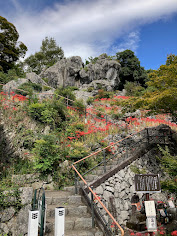2023年2月12日、立春から9日 9 days from the first day of spring 距立春九天
貞享五年の暦では、立春は一月三日*とされていましたので、一月十二日に詠まれたと普通に思われますが、一月九日説を唱え「『春立つ』は立春をもいうが、ここは年が改まる意。」と解説する芭蕉研究の大家もいます。季と言葉にことさら厳しい芭蕉がそんなわけないでしょう… *注:現代の計算では貞享5年(1688年)の立春は1月4日にあたるそうですが、貞享暦では3日になっています。
Today is the ninth day from the first day of spring. In
January last year, Basho, who was in Iga, composed a haiku admiring the fields
and mountains that change their appearance day by day with the arrival of
spring. Still 9 days after spring started. This scenery
of fields and mountains! The phrase “still 9 days”
leaves a strong impression.
Since the first day of spring was January 3 (lunar calendar) in the 5th year of Jokyo, it is believed that this haiku was composed on January 12. However, some scholars of Basho advocate the theory that it was written on January 9th. He explains, "' beginning of spring ' also means the first day of spring, but here it means that the year will change." Basho, who is particularly strict with seasons and words, can't be like that...
今天是立春的第九天。去年正月,住在伊賀的芭蕉創作了俳句,欣賞隨著春天的到來而日新月異的田野和山脈。開春僅9天 驚嘆於田野和山脈的景色 “僅9天”這句話給人留下了深刻的印象。
由於初一是貞享五年的一月三日(農曆),因此人們認為這首俳句創作於一月十二日。但也有芭蕉學者主張寫於一月九日的說法。他解釋說,“‘春立’也意味著春天的開始,但在這裡它意味著一年將會改變。”對時節和言辭都特別嚴格的芭蕉,不可能是那樣的……




コメント
コメントを投稿